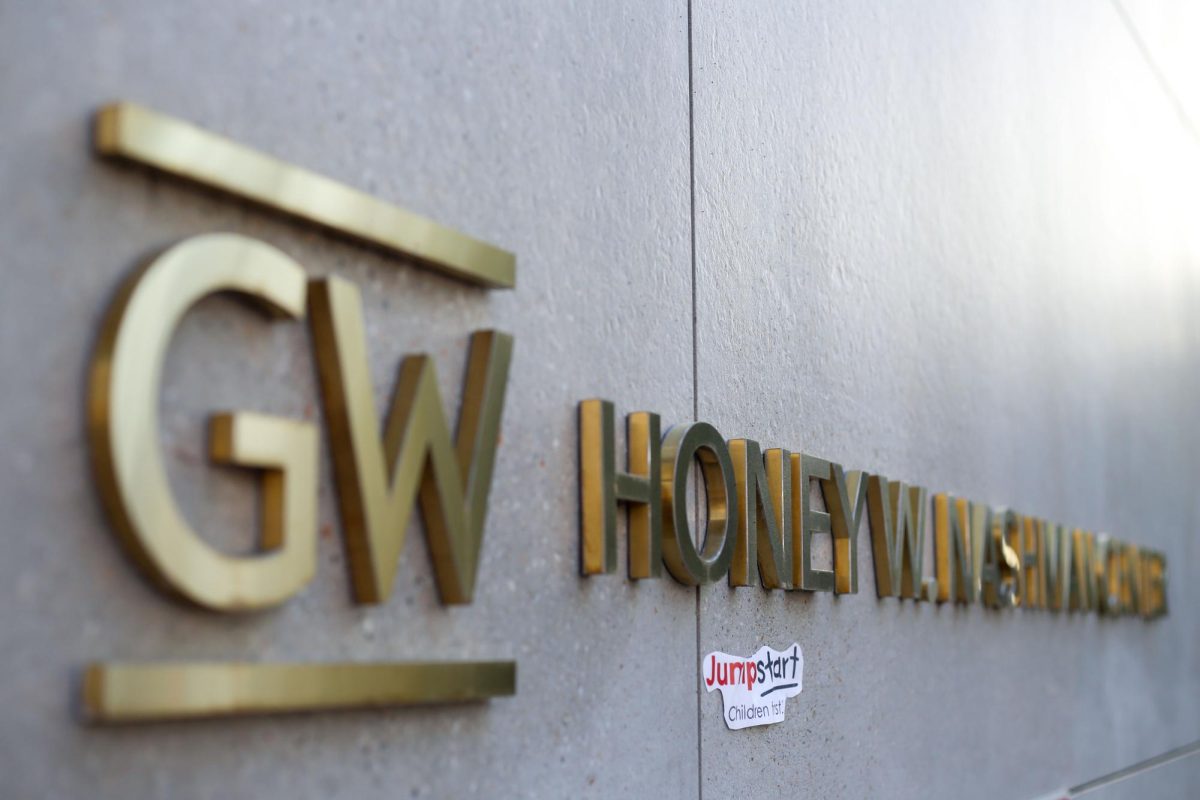Student workers for Jumpstart at GW spent up to five months in D.C. preschool classrooms, helping kids read and prep for kindergarten. But last month, for a handful of student volunteers, their work came to an abrupt end.
GW Jumpstart officials said students who exceeded 300 hours and ran out of Federal Work-Study funds would be involuntarily removed from the education outreach program and barred from working in the public schools for the final two months of the D.C. school year. But some students said they were shocked by their sudden removal from the program, saying that in prior years they could continue to work at Jumpstart even if they passed the 300-hour threshold.
“For those of us who have put in a certain amount of hours, you get to the point where it’s like, you expect to be in the classroom and you get a lot of fun doing it,” said Thomas Lane, a sophomore who was forced from the program. “So it really kind of sucks that they’re like, ‘Yeah, you just can’t do it anymore.’”
14 of Jumpstart’s 72 student members have exceeded the 300-hour requirement, according to an April 3 spreadsheet of students’ logged hours obtained by The Hatchet.
In a March 22 meeting with team leaders, led by Jumpstart Senior Site Manager Rochelle Yancey, officials said that if a student had run out of FWS funding but had not reached their 300-hour cap, they would volunteer until they hit 300 hours and then subsequently be exited, according to meeting minutes obtained by The Hatchet.
GW allocates upward of $375,000 each year in FWS funding to support more than 80 student Jumpstart workers who work an average of 10-12 hours a week, according to the National Partnership for Student Success.
The March 22 minutes state that despite some students surpassing 300 hours, they continued to clock in and receive paychecks that came out of Honey W. Nashman Center for Civic Engagement and Public Service’s budget.
Amy Cohen, the executive director of the Nashman Center, which houses Jumpstart at GW, said students who complete 300 hours would be exited from the program, conflicting with what students said occurred in the past — when they could work more than 300 hours and continue being paid.
“The Nashman Center is committed to offering students robust and engaging extracurricular work within the D.C. community,” Cohen said in an email. “GW Jumpstart is one such example, where students have the opportunity to serve preschools in low-income neighborhoods for an academic year.”
Cohen declined to say how many students had to stop serving with Jumpstart.
The Jumpstart program, an AmeriCorps initiative, debuted at GW in 1995 and trains and places college students in schools located in underserved areas to improve kindergarten readiness through small-group instruction each academic year. With their presence in classrooms, the student-teacher ratio is lowered to 3-to-1, which Jumpstart’s website states helps students receive an individualized education.
“When you lose someone in the classroom, things just become a little more chaotic,” said Lane, the student exited from Jumpstart. “There’s just one less person to communicate with the kids and see what’s going on. And if there are times where individual children need individual help, it’s that much harder to give them the help that they need.”
Lane said the classroom component of Jumpstart consisted of reading books to students and creating lesson plans and activities based on the books they read. In one example, Lane said he read a book about thunderstorms to the kids.
Lane said the March 22 meeting was a response to some students clocking in for work despite already reaching the maximum amount of money allowed under their financial aid package.
All students participating in Jumpstart are eligible for more than $1,500 from AmeriCorps if they complete 300 hours. Students who aren’t eligible for the FWS program can participate as volunteers and be qualified for the award. The Fair Labor Standards Act prohibits employees from volunteering or providing their unpaid services to for-profit employers.
Congress amended the act in 1985 to clarify people could volunteer their services to public agencies, which AmeriCorps is one of.
Cohen declined to say if students who were exited from the program were permitted to return as volunteers.
Sophomore Sahana Withanachchi, a team member for the program who ran out of FWS money and completed 300 hours, said her team leader announced that she would leave the program in the team’s group chat after the March 22 meeting because she reached her required hours and ran out of her FWS money.
Withanachchi said she learned she would also have to leave the program herself after talking to a different team leader the next day, who explained that anyone who reached 300 hours had to leave.
“There’s nothing super formal about this which is really confusing to me because there was never a statement, like released or something,” Withanachchi said.
Withanachchi said she formerly taught in a special education class every Tuesday and Thursday at Garrison Elementary in Shaw, which she began in the fall. She said she felt bad leaving her classroom before the D.C. school year ended and would have wanted to continue participating as a volunteer.
Withanachchi also said that after the meeting in late March, she had to tell her classroom that she would be leaving. She said the teachers understood the decision was out of her control, but she worried about the impact of leaving the class before the school year ended because one of her responsibilities included filling in as an assistant teacher if substitutes weren’t available.
“I had already formed a connection with these kids, and the kids were familiar with me because I was there so often,” Withanachchi said.





